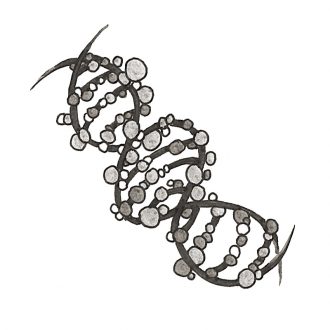
Related Questions
- Do humans emit radiation?
- Why do we sweat more in high humidity?
- How does a random group of molecules form a thinking, breathing human?
- Can medical prostheses advance further, and what are their potential risks?
- How do medicines know where in the body to start working?
- Is it possible to control someone’s thoughts?
- Why don’t we get cancer of the hair or the fingernails?
- Why do I have to take some medications every four hours but others only once a day?
- Why can’t machines — or humans — sniff out drugs or explosives as well as dogs?
- Why do our bodies make boogers?
How could biotechnology affect sports in the future?
Engineering “enhancements” are already generating debate in the world of sports. There are only going to be more…
By Sarah JensenThe history of professional sports is filled with innovations that have improved safety and allowed athletes to push their limits further and further. No one argues the value of improved helmets and shin guards and face masks or a players’ right to wear them. But the line is beginning to blur between which enhancements are ethical and which should lead to being benched for the duration. “Medical technology is good enough now that we can enhance athletes’ bodies in ways that could give them an unfair advantage over the competition,” says Anette “Peko” Hosoi, associate professor of mechanical engineering at MIT.
Hosoi cites South African champion sprinter Oscar Pistorius, a double amputee fitted with Flex-Foot Cheetah blades. Over the years, the Olympics committee and the courts have gone back and forth about whether runners like Pistorius should be allowed to participate in the Games or be disqualified because the devices enhance their own natural ability.
“People with artificial limbs can now run as fast as able-bodied athletes,” says Hosoi. “It will come down to policy and regulation as to what is allowed, and what isn’t, in professional sports.”
Making that determination won’t be easy. Currently, the rules of the International Association of Athletics Federations includes a clause banning the use of “any technical device that incorporates springs, wheels, or any other element that provides the user with an advantage over another athlete not using such a device.” That may seem a cut-and-dried ruling, but the wording raises questions of ethics and discrimination. “All artificial limbs contain springs of some sort,” says Hosoi. “How can having no legs possibly be an advantage for a sprinter?”
And it’s not inconceivable that a version of the so-called Tommy John surgery — or ulnar collateral ligament reconstruction — could be one day be developed. Currently allowed for injured ballplayers, the procedure tightens the ligaments in their arm so they can get back into major league pitching form. “The surgery doesn’t insert anything artificial in the arm,” explains Hosoi, “and it can’t increase the pitching speed of an uninjured player.”
But future advances in biotechnology might make that possible, and it’s important for regulators to imagine such scenarios ahead of time — a simple elective tightening of the ligaments, and Junior emerges from the OR hurling them across the plate like Nolan Ryan, a multimillion dollar contract a certain part of his future. A blanket rule forbidding athletes to have the surgery seems like the obvious answer — but it isn’t. “If we decided such surgery was illegal,” says Hosoi, “we’d be telling injured athletes that their career was over.”
The debate is essentially one of ethics, she says, and must involve not only those who regulate sports, but also athletes, ethicists, and engineers. “Mechanical engineers have particular insight into emerging technologies and an understanding of the mechanics of what constitutes unfair advantage,” she says.
And MIT students, with their dual focus on technology and the humanities, are equipped to weigh in on the ethical and philosophical parts of the issue as well. “MIT’s Department of Athletics, Physical Education, and Recreation is interested in working with the governing bodies who make rules for the NCAA competitions,” says Hosoi. “I hope to increase conversations with them; it’s an area where engineers must contribute to the discussion.”
Thanks to Jordan Hester for this question.
Posted: October 9, 2012